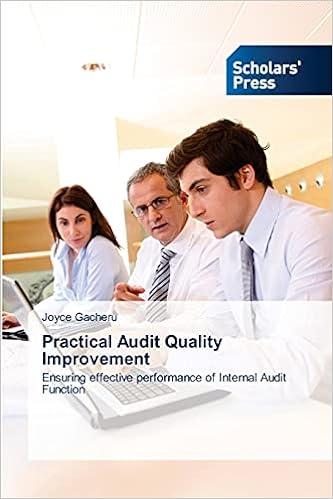Question
Present Value of Amounts Due Assume that you are going to receive $50,000 in 10 years. The current market rate of interest is 4%. a.
Present Value of Amounts Due
Assume that you are going to receive $50,000 in 10 years. The current market rate of interest is 4%.
a. Using the present value of $1 table in -->  , determine the present value of this amount compounded annually. Round to the nearest whole dollar. $_____
, determine the present value of this amount compounded annually. Round to the nearest whole dollar. $_____
b. Why is the present value less than the $50,000 to be received in the future? The present value is less due to (deflation, inflation, compounding interest) over the 10 years.
Present Value of an Annuity
On January 1 you win $50,000,000 in the state lottery. The $50,000,000 prize will be paid in equal installments of $6,250,000 over eight years. The payments will be made on December 31 of each year, beginning on December 31 of this year. If the current interest rate is 5%, determine the present value of your winnings. Use the present value tables in Exhibit 7. Round to the nearest whole dollar. $______
Shunda Corporation wholesales parts to appliance manufacturers. On January 1, Shunda issued $22,000,000 of five-year, 9% bonds at a market (effective) interest rate of 7%, receiving cash of $23,829,684. Interest is payable semiannually. Shundas fiscal year begins on January 1. The company uses the interest method.
Required:
a. Journalize the entries to record the following transactions. Refer to the Chart of Accounts for exact wording of account titles.
| |||||||||||||||||||||||||||||||||||||||||||||||||||||
| b. Determine the bond interest expense for the first year. | |||||||||||||||||||||||||||||||||||||||||||||||||||||
| c. Explain why the company was able to issue the bonds for $23,829,684 rather than for the face amount of $22,000,000 Campbell Inc. produces and sells outdoor equipment. On July 1, Year 1, Campbell issued $25,000,000 of 10-year, 10% bonds at a market (effective) interest rate of 9%, receiving cash of $26,625,925. Interest on the bonds is payable semiannually on December 31 and June 30. The fiscal year of the company is the calendar year. Required:
. The following transactions were completed by Winklevoss Inc., whose fiscal year is the calendar year:
Required:
|
Step by Step Solution
There are 3 Steps involved in it
Step: 1

Get Instant Access to Expert-Tailored Solutions
See step-by-step solutions with expert insights and AI powered tools for academic success
Step: 2

Step: 3

Ace Your Homework with AI
Get the answers you need in no time with our AI-driven, step-by-step assistance
Get Started


